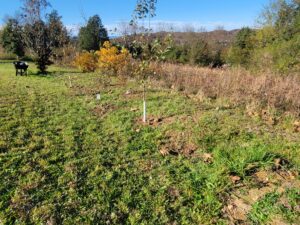The concept of the food forest is an idea that’s beginning to gain traction thanks to the increasing popularity of permaculture and folks like Gregg Lawton, Jack Spirko, Jim Gale and David Holmgren.
A food forest is essentially a grouping of plants that compliment one another and don’t compete for resources. This generally entails a ground cover level, a pollinator level, then small bushes or shrubs then topped with fruit and nut producing trees.
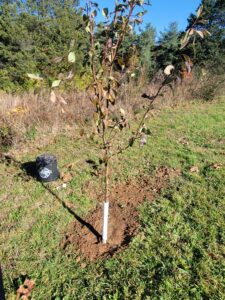
The possibilities are endless and there are appropriate choices for any kind of site, regardless of size.
I wanted to spend a full year here on the homestead before I began adding permanent food infrastructure. Now that the hot weather has passed, it’s tree planting time.
I’m starting my food forest with two Moonglow pears and six Powderblue Blueberries. I’ve walked the two acres that encompass my zones 1 and 2 and settled on an east facing gentle slope that terminates at the top of a terrace ditch. Despite being east facing, it receives plenty of sun. It’s sheltered from the high winds that can sweep across the top of the hill. It’s also situated along a half circle layout of the property.
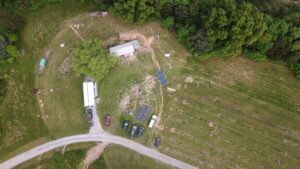
I use this half circle as a guide when adding new infrastructure. There’s a natural walkability to this layout, so I can take a few minutes’ stroll and check on everything from the fruits and berries, the chicken coop, the eventual location of a mushroom area, all of the compost systems and end it by picking up an armload of firewood on my way into the cabin.
There’s a few tips to creating a successful food forest.
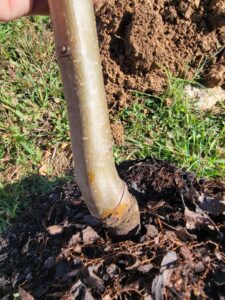
First, know your spacing. The tag on these blueberries (one gallon size) said they have an eight by eight foot spread. That’s probably not likely in our soil conditions, but I allowed for it just in case. Consider how shade will be cast and take that into account. Make sure your soil drains well but is not prone to being bone dry either.
When planting trees, make sure you don’t plant it too deeply. When you look at the bottom of the tree trunk, you can see the bulge where the fruiting variety was grafted onto the root stock. Don’t let that graft be below ground level. Dig your hole twice the width of the container (or root spread) of the tree you’re planting. You want the roots to be able to dig into looser soil as it gets established. Make sure the tree is straight. Use tree strap ties if necessary, keeping a loose loop around the tree trunk, not cinched like a noose against the bark.
Here’s where my weirdness comes in: talk to your plants, encourage them and give them your hopeful and positive energy while interacting with them. I’ve known people who’ve worried over their plantings and I’ve watched those plantings struggle. Believe in your trees. I don’t care how corny that sounds.
Trees planted as they’re going dormant should not be fertilized. Ideally you’ve planted them into soil that’s already well amended and healthy, but should they need fertilized, do that in the spring and follow the suggestions to the letter. 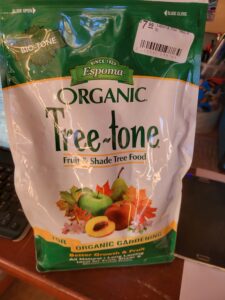
Make your food forest a place you want to visit and commune with. Consider a bench or a couple of posts with a hammock. The more time you spend there, the more you’ll learn and find ways of adding further plantings and assisting with correcting any imbalances.
Working with these trees today, I’ve found that I’ve improved my skills at cultivating and exercising patience. Usually I’m on a mission to finish a task as soon as possible but today I took time to commune with the process and because of that, I feel like I’ve placed these trees and bushes in a place where they’ll thrive and bring us food as well as joy.
